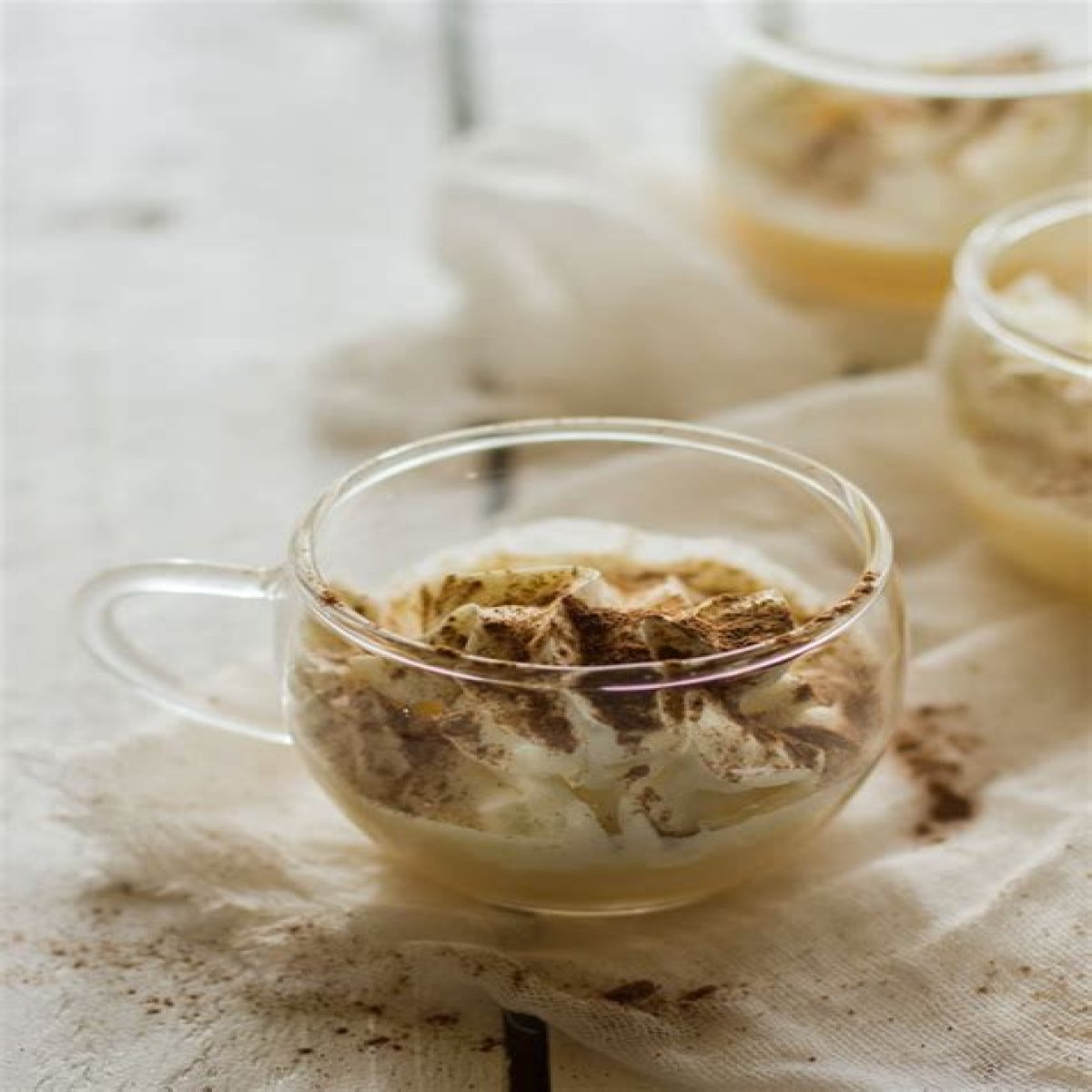Nothing says it's the festive season like a glass of eggnog by the fire. The classic winter drink, which is made of eggs seasoned with alcohol and doused with cream and nutmeg, can be found all over the place come December, from Starbucks' eggnog lattes to down-home versions heavily spiked with bourbon. Eggnog is a treat with some health benefits, even if, like all intensely rich festive drinks, having one is often more than enough.
"The holiday season is all about traditions, and if your tradition includes making homemade eggnog, there are a few things you should know about the potential health benefits," Dr. Seema Sarin M.D., head of lifestyle medicine at EHE Health, tells Bustle.
Whether you make your own eggnog at home and opt for a favorite variety of spices (and your choice of alcohol), or nab some at a store or café, eggnog is a staple of the winter season. According to Smithsonian Magazine, people have been drinking eggs mixed with milk and alcohol since at least the 13th century. George Washington himself published an eggnog recipe, though his packs a punch: it contains the usual suspects, like cream and eggs, but also brandy, rye, rum, and sherry. Good luck focusing your eyes after that.
Here are the nutritional benefits and drawbacks of its deliciousness.
.
Experts:
Ginger Hultin R.D.N.
Dr. Seema Sarin M.D.
Liz Weinandy M.P.H. R.D.N. L.D.
Studies cited:
Abourashed, E. A., & El-Alfy, A. T. (2016). Chemical diversity and pharmacological significance of the secondary metabolites of nutmeg (Myristica fragrans Houtt.). Phytochemistry reviews : proceedings of the Phytochemical Society of Europe, 15(6), 1035–1056.
GBD 2016 Alcohol Collaborators (2018). Alcohol use and burden for 195 countries and territories, 1990-2016: a systematic analysis for the Global Burden of Disease Study 2016. Lancet (London, England), 392(10152), 1015–1035. (18)31310-2
Lee, KJ., Kim, KS., Kim, HN. et al. Association between dietary calcium and phosphorus intakes, dietary calcium/phosphorus ratio and bone mass in the Korean population. Nutr J13, 114 (2014).
